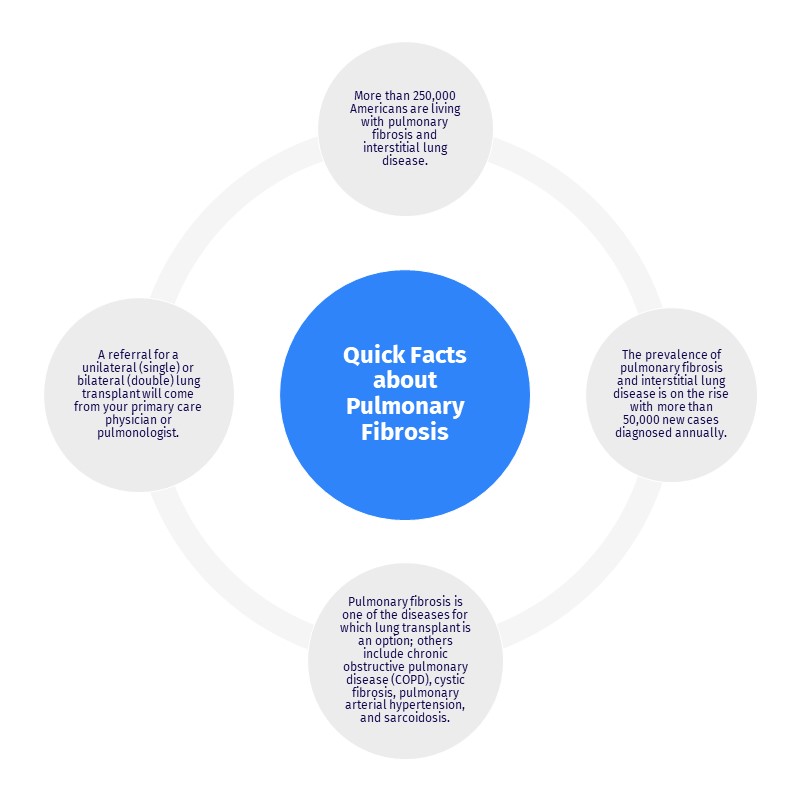
Lung transplantation is a treatment option for certain patients with advanced lung disease where medical therapies has been exhausted. Significant improvements in lung transplant outcomes have been achieved due to changes in donor and recipient selection, use of various lung donor preservation technologies, peri-operative management and improved monitoring and management post-operative complications. Unfortunately, certain persistent challenges are limiting factors to further the patient outcome success experienced for other solid organ transplant recipients. Great effort is being taken to reduce the following complications that limit overall survival: primary graft dysfunction, infections, acute cellular or antibody mediated rejection, post-transplant lymphoproliferative disease and chronic lung allograft dysfunction. Patient symptoms, breathing tests (spirometry) and radiographic findings are all indirect monitoring tools to determine the potential for having an infection or rejection episode. In the last year, there was greater need for remote monitoring with home spirometry and telemedicine. Precision medicine has been increasing in medicine. In transplant medicine, in particular, donor derived cell free DNA is a blood test that can potentially assist in determining the presence or absence of rejection. At this point there are no advances in new immunosuppression therapies, but as precision medicine further advances, perhaps there can be a dose reduction of medications to continue to provide protection against rejection episodes while minimizing their adverse events.
The multidisciplinary lung transplant teams continue to strive better outcomes through:
Patient Selection – More centers are building strength and endurance to allow for the ability to pursue lung transplant even in the presence of requiring mechanical ventilation and/or extracorpeal membrane oxygenation (ECMO). In partnership with the transplant infectious disease colleagues, certain highly virulent infections can be controllable. Some centers have administered bacteriophage therapy to allow for the control of the infections while on the waitlist or following lung transplantation.
Donor Selection – Lung perfusion technology like ex vivo lung perfusion (EVLP) and TransMedics are more widely used to increase donor lung acquisition. The clinical trial evaluating the role of a negative pressure ventilation system; ex situ lung perfusion (ESLP) is still ongoing. Donation after cardiac death (DCD) continues to be approximately 2% of the lung transplants that have been performed using in the United States. Many centers are actively evaluating the logistics and outcomes using DCD. The model utilizing the use of deceased donor lungs are proving good opportunities. There has not been the need for any living lobar lung transplant in the United States since 2013. Lung transplant centers have actively expanded the donor pool for patients by utilizing lung donation from donors with confirmed active hepatitis C infection. Recipients are provided hepatitis C antiviral therapy for a 2-3 month duration that makes it essentially curable. One major challenge that may continue to be present in this upcoming year is the barrier to transplant with active covid-19 infection in the donor lung. Unlike other solid organ transplants, the lungs will have a potential for significant damage following lung transplantation.
Chronic Lung Allograft Dysfunction (CLAD) remains a major barrier to longevity following lung transplantation. Repeated cellular and antibody mediated rejection, certain infections, intolerability to medications and gastroesophageal reflux disease (GERD) are major risk factors for early development of CLAD. Efforts to reduce the effects of GERD with the use of a reflux band, esophageal wrap via LINX or fundoplication has been shown to reduce CLAD. Bronchiolitis obliterans syndrome (BOS) is the major feature of CLAD; 65-75%. More advances show that another feature can be present, known as, restrictive CLAD that account for 25-35% of CLAD. Various immunosuppressive agent have and continue to be evaluated to reduce CLAD. They are either an intravenous, oral or inhalation formulation. There is also the use of ultraviolet light therapy to help regulate the immune cells with the use of extracorpeal photopheresis. Anti-proliferative agents used to treat idiopathic pulmonary fibrosis are being studies to help with restrictive CLAD.
We hope that the Lung Transplant Week will help expand the lung transplant needs for patients with advanced stage lung disease. The continued partnership among the transplant centers, organ procurement organizations, research facilities and patient advocacy groups will continue to advance lung transplant outcomes.




